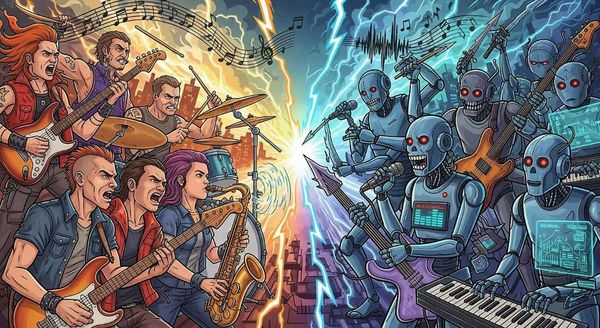The Earth Is Dying And NO It's Not Just From Your Plastic Straws
We are killing our planet, our home.
Every single one of us is contributing to the downfall of our environment. We are consumers meaning we play a vital role in our economic system, but it comes at a great cost to our environment.
Every single day there are more than a half million plastic straws being used and just tossed away.
Where does all of this plastic end up? Landfills or even worse, the ocean. It is estimated that there are currently 165,000,000 US tons of plastic in the ocean right now and it is increasing at a rate of 8,800,000 tons daily.
Those numbers are concerning and plastic isn't even the only thing contributing to the harm that's being caused to our planet. We also have water and climate crisis. 80% of China's water reservoirs are contaminated, and the rest of the world continues to over consume and contaminate its water supplies.
AND with the climate crisis, we are well on our way to a catastrophic 4°C rise in temperature by the end of the century, and climate change and its resulting extreme weather conditions contribute to the death by hunger and communicable diseases of 400,000 people every year (mostly children in developing countries).
THEN there's the fishery depletion. Over-fishing in our seas, rivers, and lakes has led to what scientists call eutrophication or excessive plant growth.
The fewer fish we have, the more plants that grow - the more plants that grow, the fewer fish we have - trapping us in a vicious cycle that gives us less fish to eat and upsets the delicate balance of the ecosystem our planet needs to survive and thrive.
AS WELL AS the energy crisis. Most of our energy comes from coal and natural gas, which cause harmful emissions and further negative climate change. Energy needs are likely to remain unmet for hundreds of millions of households ongoing unless we urgently find more sustainable sources of energy for all.
AND of course one of the major things no one cares enough to really talk about population growth. The United Nations predicts that by 2050 the world's population will reach a whopping 9 billion - which means we'll all be competing for increasingly scarce resources, it will be slower and more difficult to mobilize people to change, there'll be further environmental pollution and increased political instability.
I'm not saying people need to stop having children so that the growth rate quits rising, I'm just saying we need to figure out a way that people can still get viable resources without draining the earth completely. We need to be more conservative.
https://www.nature.com/articles/d41586-018-06062-4
https://www.cnn.com/2019/04/21/world/sutter-earth-day-climate-scn/index.html



























A Response To Common Core: If Only School Academics Could Change
The common core isn't what we need. We need to change every school for the better!
Ever since high schools have opened up, there are minor changes that need to be implemented in order to better the schools for students' futures. Students need the ability to learn about the various majors that colleges offer them before going into college and also need a de-stressor element during the school day. With the implementation of required career pathways and instructional focus, high school students will be able to enter college with a set mindset of what they want to go through the exposure and experience of the field from career pathways, along with build time management skills for their work.
High school students are not exposed to all the majors that they have interest in and are not given the opportunity to truly learn the fundamentals of a major with the # of classes and AP courses they desire to take in high school. With the implementation of a necessary two major career pathways throughout high school, students will be able to learn about the variety of majors and figure out what they truly have interest in. Schools can have basic major career pathways that give background knowledge about different fields, which will allow the students to see what they enjoy. For example, some of these classes could include marketing, medical, computer science, culinary pathways and more.
In these classes, first-year pathway teachers would teach the students about the basics of the career, along with the specific fields that the students can choose in this pathway. In the second and third years, teachers will be able to teach students about the hands-on experience that students need to apply. With this, if a student doesn't enjoy a field, the next year they can change and find one that they can pursue in the future; this helps guide students in college.
Two career pathway classes will be necessary for two years in order to graduate. This allows students who enjoy their fields to pursue the career for four years and have a side career that they wouldn't mind having as well. In addition, a period of time set aside called Instructional Focus (IF) would bolster the quality of a student's high school experience. Being a specific period in one's daily schedule, this forty-five minute period would occur every Wednesday. It serves the purpose of a study hall and "flex" period. A flex period would give the students the flexibility to move to different classrooms and teachers, with a hallway pass with the teacher's permission. This time is specifically allocated for students to make up missed work/tests, finish up homework and consult teachers and peers with academic regard.
Essentially, this extends the learning experience from simply doing homework at home alone to interacting in an engaging manner with the task they are given and truly absorbing all information. Sometimes, high school classes can pile up and become somewhat strenuous and difficult; this instructional focus period acts as a means for alleviating some stress and allowing education to focus back upon interactive learning.
While the need for career pathway classes sounds theoretically tangible, some would argue that most students already know what they're going to major in in college, which would be a waste for these students. Although some students believe they know exactly what major they are going to pursue in the future, only 25% truly stick with it. It is stated on Central College (Central College is a website that allows students to research their college, admissions and excess information about the college major details), "75% of American college students start college undecided or change their major."
This depicts the need for experience prior to going to college. Though the student knows what field to major in from now, they will have experience with a second major that they'll know they can join if they decide to switch in high school. By having two major career pathways each year, students won't be wasting money on classes to figure out what major they like, but will instead be able to join the major that they know they already have experience in. This will allow students to save time by choosing their field in high school along with achieving more earlier in the future.
One may question the academic and professional nature that Instructional Focus theoretically promises; this could be a time students utilize inappropriately for non-academic reasons is an argument that may come up. However, this is in no way a "free" period for students to do as they please. Instead, students are still in a traditional classroom monitored by their 4th-period teachers. The presence of teachers and faculty as supervisors addresses completely any concern for lack of supervision. Also, the flexibility of IF is enforced with careful attention to whether a student actually needs to be in another teacher's room too, perhaps, make up a missed test.
The passes that allow students to transition are a blue color that cannot easily be replicated, require a teacher signature, and require information about what the student is doing and where he or she will be. Supplementary to this is a sign out sheet used whenever a student transitions. Overall, an instructional focus period should be seen as necessary and vital to a student's quality of life in school and not a means of deviating a student's attention away from academia; it actually focuses attention more towards it. To provide more consistency and make such theoretical ideas seem more tangible, a schedule model has been created that high school can adopt and follow.
Following the traditional 7-period schedule, the classes will be divided as such: five core classes that include the necessary graduation requirements, two career pathway classes, and one instructional focus period. Students will still attend 7 classes but will be given the opportunity to choose career classes that truly depict the field that they have chosen. Instructional Focus will allow them to catch up on assignments along with giving a de-stressor to those who just need a break from studying once in a while. With this schedule, students will be given extra time while also allowing teachers to catch up on the grading that students complain about falling behind. This model reaps the benefits of consistency and tangibility, as a school schedule should be. This schedule is not a big deviation from the standard schedule we use now, but instead supplementary to it and adds the benefits of career pathways and instructional focus.